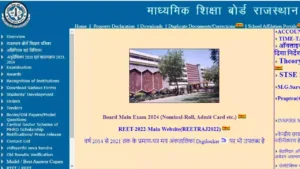Secure Your Golden Years: A Comprehensive Guide to Managing Your Retirement Savings in India
Planning for retirement is like building a sturdy ship – the earlier you start, the better equipped you are to navigate the seas of post-work life. In India, with a rapidly aging population, managing your retirement savings becomes even more crucial. This guide delves into practical strategies and insights to help you navigate the world of retirement saving and secure a financially comfortable future.
Understanding the Landscape: Retirement Planning in India
The traditional concept of relying solely on pension plans from employers is gradually fading. With increasing life expectancy and potential medical needs, individuals need to take an active role in building their retirement corpus. Here’s what you need to consider:
- Government Schemes: The Indian government offers various social security schemes like the National Pension System (NPS) and Atal Pension Yojana (APY) to incentivize saving for retirement.
- Employer-sponsored plans: Many companies offer pension plans or provident funds, contributing a portion of your salary towards your retirement.
- Personal investments: This can include instruments like mutual funds, stocks, bonds, and real estate.
Building Your Nest Egg: Smart Strategies for Saving
Now that you understand the landscape, let’s explore actionable steps to build your retirement savings:
1. Start Early and Save Consistently: The power of compound interest is your greatest ally. Starting early allows even small contributions to grow significantly over time. Develop the habit of saving a fixed portion of your income every month, regardless of the amount.
2. Assess Your Needs: Estimate your desired post-retirement lifestyle and the corresponding expenses. This will help you determine the corpus you need to accumulate. Remember to factor in inflation and potential healthcare costs.
3. Leverage Employer Benefits: If your employer offers a pension plan, contribute the maximum permissible amount to benefit from the matching contribution (if applicable). This is essentially free money towards your retirement.
4. Explore Government Schemes: Government schemes like NPS and APY offer tax benefits and guaranteed returns, making them attractive options, especially for those in the lower income bracket.
5. Invest Wisely: Diversify your investment portfolio across different asset classes like equity, debt, and real estate to mitigate risk and maximize returns. Consider seeking professional financial advice to create a personalized investment plan that aligns with your risk tolerance and financial goals.
Maximizing Your Savings: Powerful Tools and Tips
1. Automate Your Savings: Set up a Standing Instruction (SI) to automatically transfer a fixed amount from your salary account to your investment plan or savings account. This eliminates the need for manual intervention and ensures consistent saving.
2. Review and Rebalance: Regularly review your investment portfolio and rebalance it as needed to maintain your desired asset allocation. This helps mitigate risk and ensures your portfolio stays aligned with your evolving needs and risk tolerance.
3. Prioritize Debt Repayment: High-interest debt can significantly hinder your saving efforts. Focus on paying off high-interest debts like credit card bills and personal loans to free up your income for retirement saving.
4. Utilize Tax Benefits: Take advantage of tax-saving investment options like the Employee Provident Fund (EPF), Public Provident Fund (PPF), and Equity Linked Savings Schemes (ELSS) to reduce your tax liability and boost your retirement savings.
Building a Secure Future: A Step-by-Step Guide
Here’s a simplified roadmap to get you started on your retirement planning journey:
1. Assess your current financial situation: Calculate your monthly income, expenses, and existing debts. 2. Determine your retirement age and desired lifestyle: This will help you estimate your future expenses. 3. Research available retirement saving options: Explore government schemes, employer benefits, and personal investment options. 4. Choose a suitable asset allocation: This will depend on your risk tolerance and investment horizon. 5. Develop a saving plan: Set a realistic savings target and automate your contributions. 6. Regularly review and adjust your plan: As your circumstances and financial goals evolve, adapt your saving strategy accordingly.
Remember, securing your golden years is an ongoing process. By adopting a disciplined approach, making informed investment decisions, and utilizing available resources, you can build a secure and comfortable retirement future.














